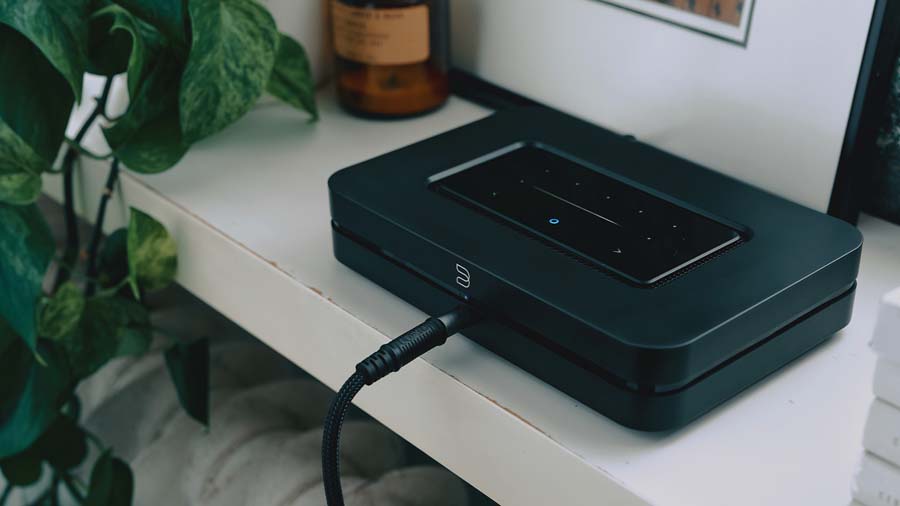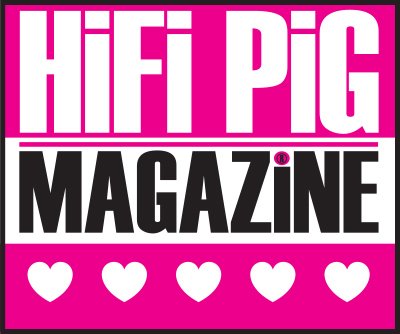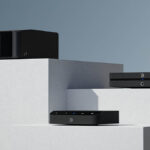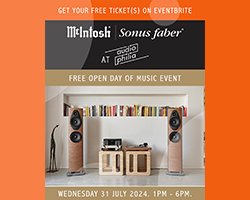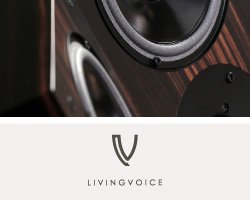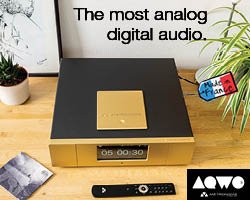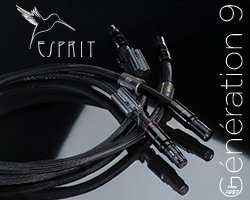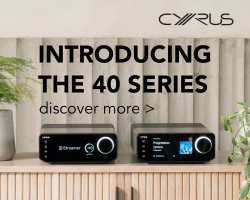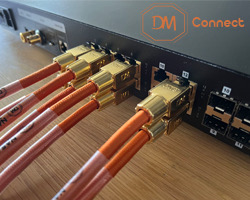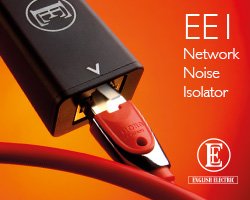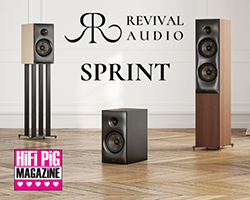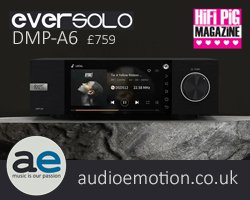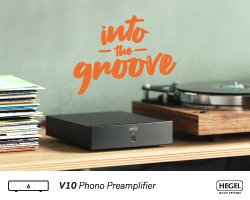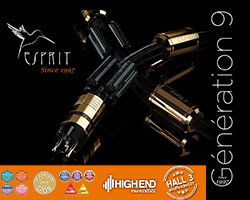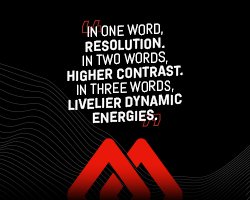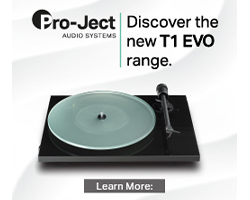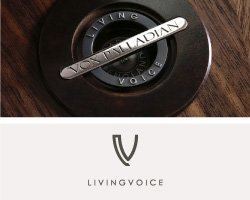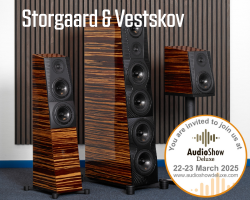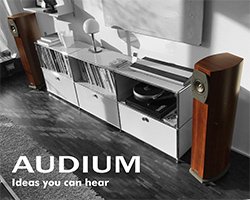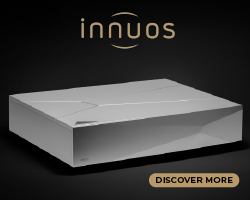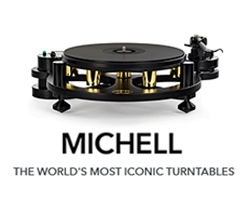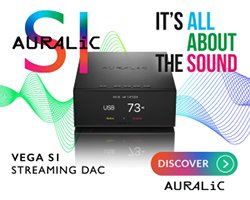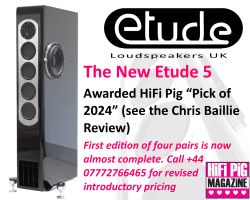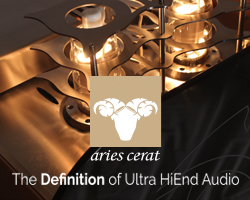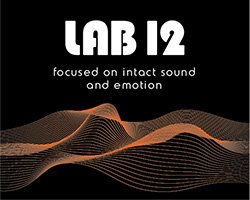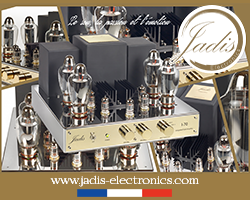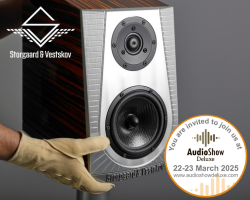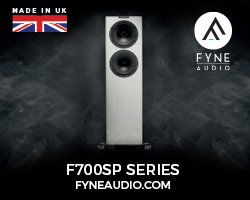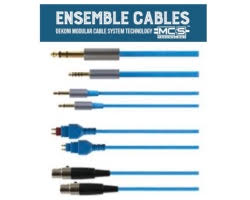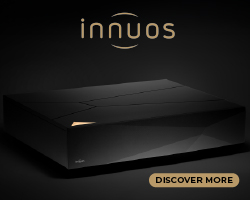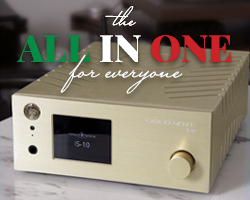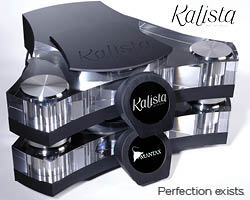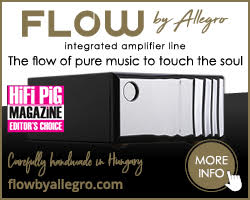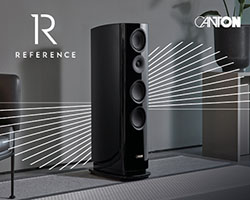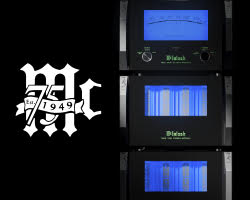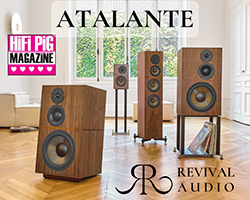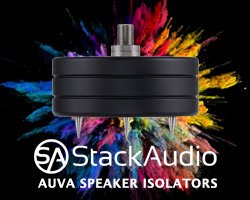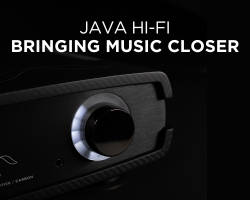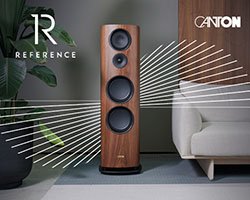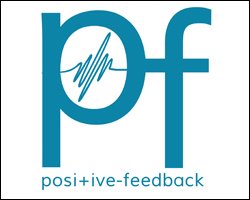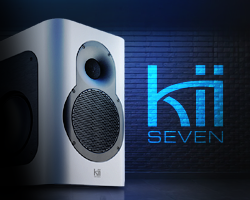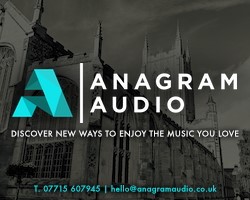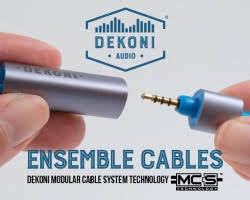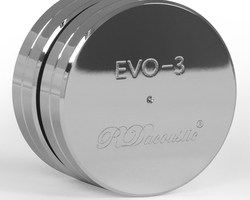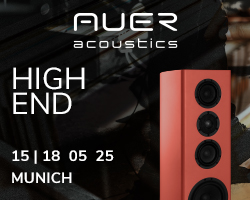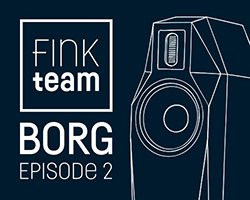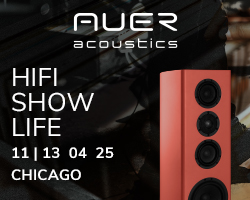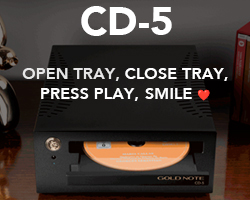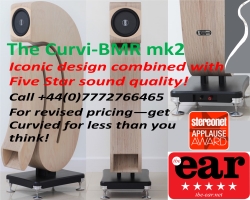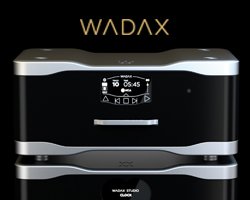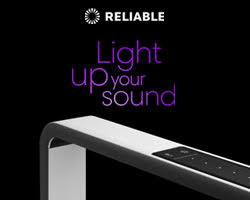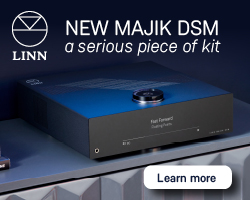BLUESOUND NODE 2024 STREAMER REVIEW
Blusound Node 2024 streamer is the Canadian company’s latest £499 iteration of this well-known music streamer. As well as the BluOS app, you also get DIRAC room correction with the latest Node. Janine Elliot plumbs the Node into her hone network for HiFi PiG.
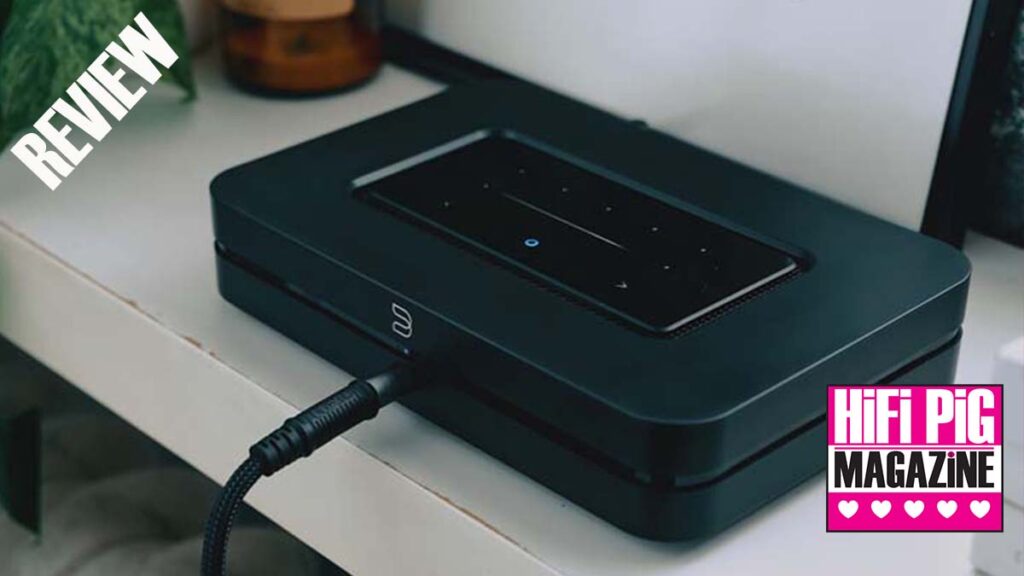
Anyone who regularly uses the word “streamer” will be well aware of the 3 “Node” series models from Canadian-based Bluesound, a company right at the start of streaming audio around the house. They will probably also have conflicting opinions on the accompanying BluOS controller to play all your musical offerings on it. More on my opinion of BluOS later. The company’s popular BluOS controller is deployed by a number of manufacturers including NAD, Cyrus, Dali and Roksan.
The Bluesound Nodes come in three forms; the economy Nano, mid-priced Node (2024) and top model Node Icon. This reminds me of the three WiiM streamers, again offering different price points, looks and features. Where the Node up for review here is screen-less, the top WiiM Ultra, which uses the same ESS chip, is cheaper and does come with a screen. Looks aren’t everything, though, and I wanted to see if the £499 Node performance was worth the price, coming in at slightly more than the excellent, though not quite so good-looking, Cambridge Audio MXN10. Both these models rely on the accompanying apps for operation and viewing album covers, etc. After all, the screen on any sub-£1000 streamer is going to be fairly small to see or function unless you are sat right next to it.
Bluesound was set up by audiophiles who weren’t content with the then quality of streamed music. Mostly relying on 16bit/44.1kHz maximum playback, they aimed to get 24-bit hi-res digital audio available for all to enjoy. Bluesound is owned by Lenbrook Industries Limited, a Canadian company that also owns NAD, PSB, and MQA. I got excited by music streaming when I reviewed the NAD M66 very recently, with the fact that it used the BluOS controller and having technology links with DIRAC to radically change the sound in my listening room. Would I be quite so excited with the much cheaper Node, which is also DIRAC friendly (with a licence)?
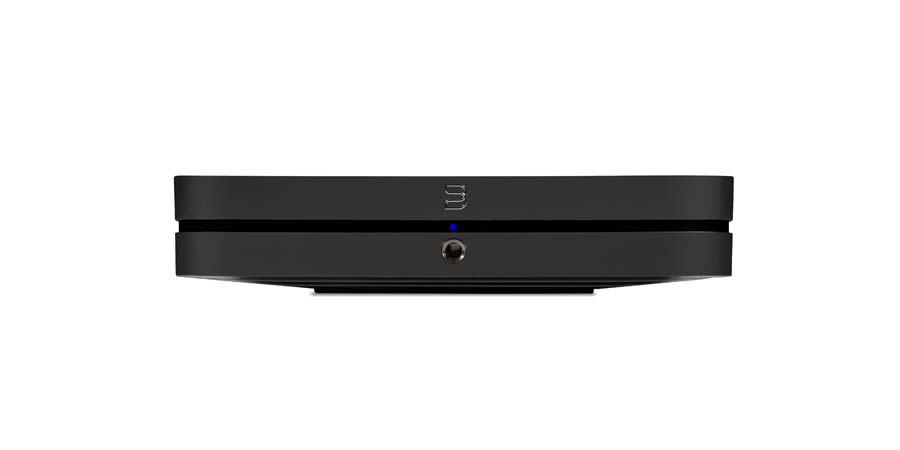
BLUESOUND AND BluOS
The Node relies on the company’s BluOS music management system (available on Android, Windows, iOS and macOS devices) to communicate with it, and the Bluesound can link to 64 sources, if you want to connect it to powered speakers around the house. This can also mean playing different music in different rooms if your family disagree on musical choices. For the review, I connected it to my MFA/Synthesis system and also used the Russ Andrews Network Purifier placed between the modem and the Node for some of the review, a passive box containing 8 “zapperators” to filter out Wi-Fi interference around the 2-4GHz range. Most music sources were from my A&K DAP hard drive or using the Qobuz player from my Android phone.


DESIGN AND FEATURES OF THE BLUESOUND NODE
The Node 2024 is the 4th incarnation of the product. The first was unveiled at the Munich show in 2013, and has been improved over the years, not least in looks, though staying basically the same since the last morph. That most recent 2021 version used the Texas Instruments PMC5242 DAC, but as in most streamers and DAPs these days, this has been replaced by the excellent ESS Sabre ES9039Q2M. The Nano and Node versions deploy a single ESS chip, but the top-of-the-range Icon deploys two, one for each channel. Bluesound even do an anniversary Node X version in silver for a few more quid, and a PowerNode and PowerNode Edge which have a built-in amplifier. Seems they must be very happy with their Node, just as Linn Sondek LP12s and Porsche 911’s have just kept on going. The company, of course, also make wireless-powered multi-room and home-theatre speakers.
BluOS can link music from your phone on Wi-Fi. NAS, or link to Qobuz, etc. via your LAN. The BluOS software is also voice-recognition friendly, so you can use it with your Alexa, Google Assistant, or Siri for commands around the house. The box, available in matt black or white, (about the same size as a good book) has its functions on the top of the unit, just like in its previous incarnation. These are touch-sensitive and the display even lights up as your fingers approach the shiny rectangular display on the top. There are 5 saved presets you can designate plus a volume control indicated by a long white line, the length of it depending on what you have selected. For ease of operation, I selected “Output Level Fixed” so that the volume was always set to maximum – I was using a preamplifier. There are +/- buttons to select next/previous tracks, and finally, a single light on the top and another replicated on the front of the unit, both showing you with different colours the status of the Bluesound with respect to setting up, connecting to the modem or upgrading, for example. The front also has a ¼” headphone socket in case you still don’t have wireless cans, using the excellent THX AAA™ headphone technology, as found in many players these days. The rear has RCA line-out plus a subwoofer output, RCA coax and optical outputs, an optical/analogue input (a mini-jack to Toslink adaptor is included), a 12V trigger out, IR extender 3.5mm socket (in case you store the Node away in a cupboard somewhere), the important LAN port, and a USB Type A socket for input/output when used as a source, storage medium, or connecting to a DIRAC microphone system for setting up room correction. Finally, a HDMI ARC/eARC socket allows you to connect to your ARC/eARC enabled TV output. Mains input is via a figure-of-8 socket. There is no off/on switchery, so either leave it connected all the time or, like me, reconnect to the BluOS each time you use it.
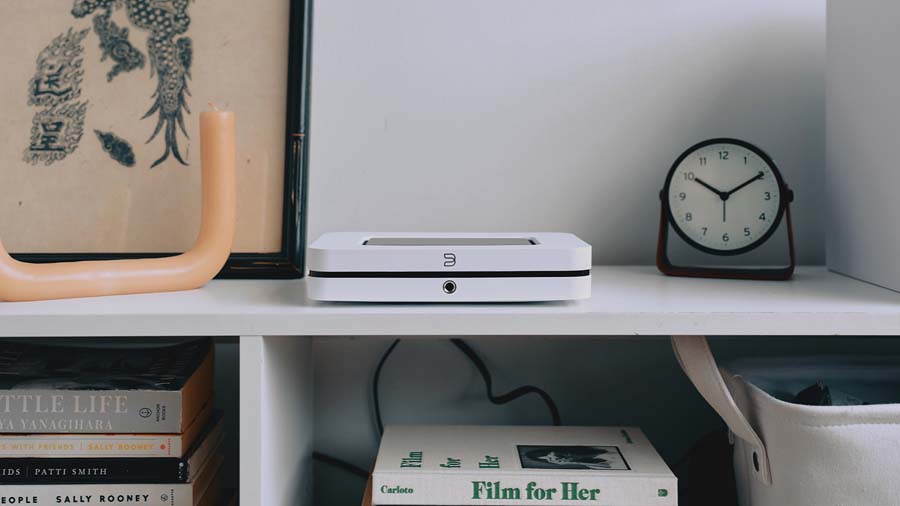
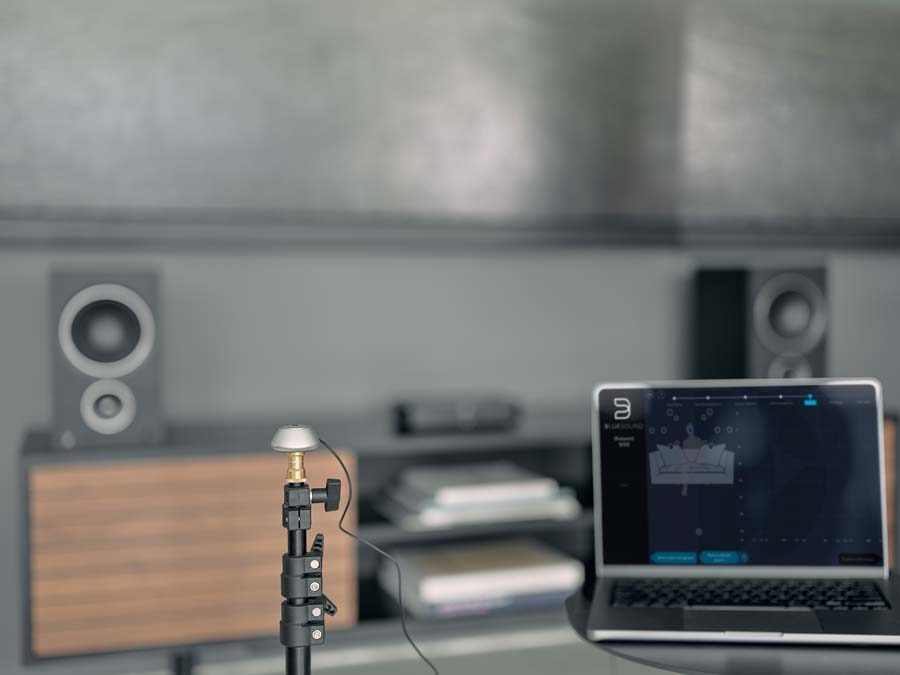
QUIBBLES
Whilst setting up the Node to the BluOS was fairly easy, there were a few times when things didn’t go too well. On more than one occasion it couldn’t find the Node when I turned it all on, so I needed to open BluOS before starting up the Node or at least by the time the Node was hunting for the controller. Do remember to set your phone Bluetooth to “manual” or “disabled” on BluOS to ensure that the Node doesn’t automatically switch to the phone whenever you get a text arriving or decide to change pages on your mobile, as I did at the start (thank you to Bluesound for helping me with this issue!) Also, if you are i-savvy and have VPN selected on your phone, it won’t be discovered by the Node, so you’ll need to switch it off. BluOS has received a number of questions and expletives over its operation from customers over the last few years, most of them, though, simply because they have not been set up correctly by the operator. Bluesound engineers are always there to help, however, a better stage-by-stage “how to set up” document would have been useful, especially for those who are somewhat aged, or still think WIN XP is the latest operating system (it isn’t? -Ed). Similarly, the “Quick Setup Guide” pamphlet coming with the NODE could have said exactly what is written on the downloadable 5-page version, without any extra space needed. For £500 I would expect more help in setting up. However, that seems to be said with a lot of HiFi that I review these days; It all assumes we are phone and network-savvy, and also have the eyesight to actually be able to read it, too! I liked the hi-gloss manual that came with the Quad33/303, even if it had a few typos. Although I had previously used DIRAC room correction software for the NAD M66 review, I still had issues setting it up for the Node as it wouldn’t let me search for a *new* source until I reinstalled a new DIRAC over the old one! Don’t you sometimes hate technology? My own luck had another gremlin when I tried logging into my Bluesound website customer log-in – apparently, I didn’t exist! I persevered. All was well in the end, as my childhood books always said.
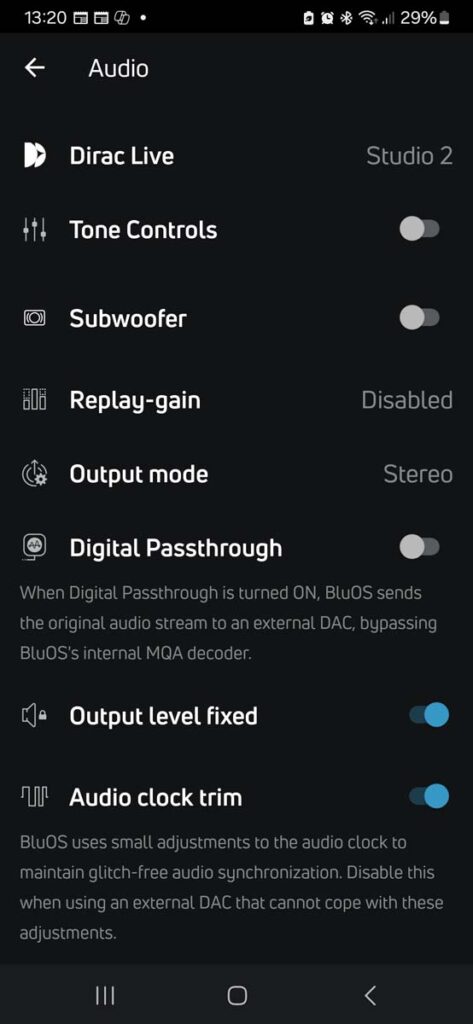
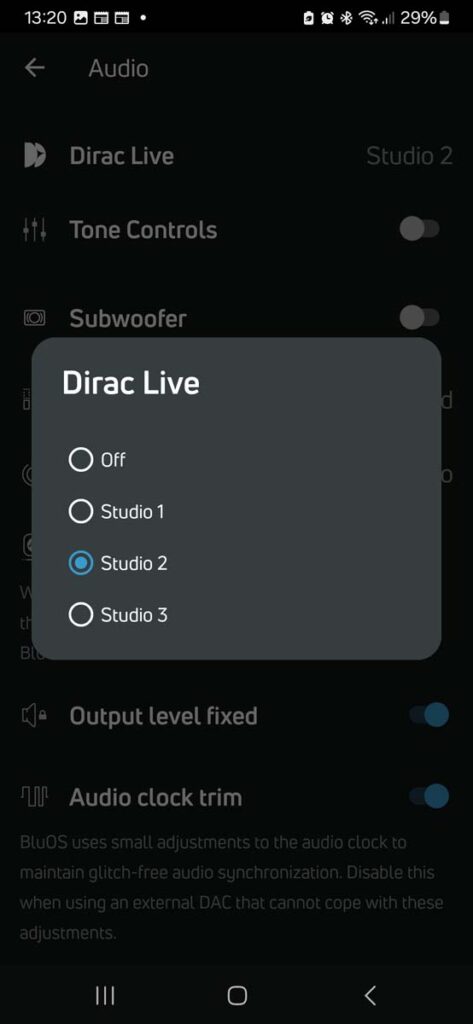
SOUND QUALITY
The Node is so easy to use once you have ironed out all the operational issues – YMMV. Not only could I now listen to hi-res 24bit/192kHz and DSD256 audio through my HiFi, but I could now listen to whatever I wanted to, as long as what I wanted was on the Qobuz, Deezer, TuneIn, Radio Paradise, or whichever music service I chose. Using Qobuz didn’t come up with the usual window of showing lists of new albums appearing daily, but it is handy having all the services you need on a single BluOS “player”.
The ESS Sabre ES9039Q2M using their HyperStream® IV Dual DAC™ technology works at up to 32bit/768kHz so should manage my LAN and Wi-Fi signals with ease. One of the first tracks I played was from Jethro Tull; I’ve been playing lots from the band recently so knew the sound I was listening to. The Qobuz gave a very tight, detailed and excellently crafted presentation that certainly opened up further with the Russ Andrews Network Purifier connected(review published soon). The sound seemed to implode a tad when that device was removed, though the bass was far more exciting and extended. Indeed, David Gilmour’s “Wish You Were Here” live at the Royal Albert Hall (2007) similarly had less bass than I hoped for with the Purifier connected. That filter certainly improved the music in terms of excitement and transient speed, but I decided for the rest of the review to listen to the Node without gadgets that might, for better or worse, affect my findings.
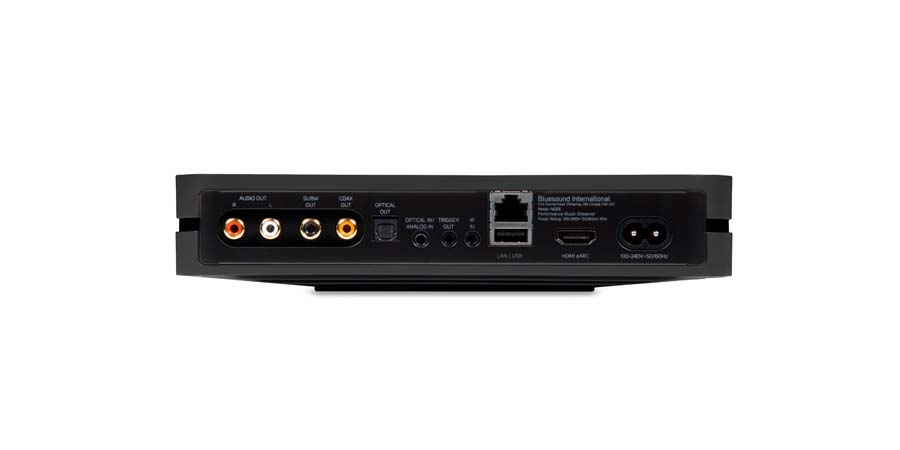
Keeping with music that can sound overly compressed and unclear on lesser HiFi, Dream Theatre from America produces progressive metal music tinged with the occasional gentle and classical impulses. “Untethered Angel” is no exception; an angelic introduction soon unleashes with distorted guitars and vocals, plus heavy drumming which either gets your feet tapping or you heading for the paracetamol. Yet, still within the quagmire of electrical confusion is an overall charm and musicality that the Node still managed to show me. Detail of instrumentation, soundstage and an ability to perform just as I know this track can do, gave me a sense of confidence in the Node. Despite the high compression in the music, it all still sounded detailed and with excellent power and extension. The cymbals in “Paralyzed” were not hindered in any way, sounding very clear, fast, and, most importantly, real.
Kate Bush was a great fan of digits, being one of the first to own the amazing Australian “Fairlight CMI” (Computer Musical Instrument) from 1979 that started the revolution into digital sampled music. We had one installed at my University music studios at around the time; about the cost of a house! Kate’s use of sampled and digitally-altered sounds in her music is well known. “Running Up That Hill (A Deal with God)” from 1984 is full of strong bass-toms and synthesisers in this less popular version from 2012. It had the same detail and extension as on other versions of the same track, though playing 16/44.1 music sources on the Node couldn’t compete with the musicality, detail and “analogue vibe” from my expensive Krell KPS20i CD player. Hardly anything will beat that, even in its old age, but the Node certainly tried.
Turning to classics I chose a new album from Fatma Said of some German Lieder (songs), though – typical with Qobuz for classical music – full details of each piece was missing, including composers! Schubert’s “Schwanengesang D.957 No 4 Standchen” had an interesting soundstage; very clear on her vocals, but piano accompaniment was placed somewhat distant from her, though the staccato notes allowed a clear indication of the room acoustics, contrasting well with her legato singing. The Node gave a very compelling performance of this and the other tracks on the album which include other instrumentalists. The loud climaxes from her voice and the varying intensity of the piano notes were kept well under control. All the accompaniments were carefully and musically performed with no sign of any digital collapse. A clarinettist joins in the “Der Hirt auf dem Felsen” D.965, beautiful in all respects, giving a very confident presentation, as did other tracks using a harp or string quartet. All instruments had excellent timing and resolution making the music very natural and organic, and there was plenty of fresh-air allowed to mingle in between all the notes. This was even more apparent in Mahler’s lovely “Titan” symphony (Harmonie Mundi, Francois-Xavier Roth). This 1st symphony has plenty of space and focus, plus dynamism when Mahler felt like it. That long start has a quiet “A” drone on upper strings whilst other instruments enter with lots of riffs as the tension mounts, easily captured through the Node. The performance is well controlled and the soundstage, front to back as well as left and right, was ably positioned via the Node (and better with DIRAC; see later). The well-known 3rd movement has the famous French nursery rhyme “Frère Jacques”, though in Mahler’s moody style, it’s now in a minor key, and the final music really lets rip, especially in the brass section and the extended bass from the kettle drums. The sound was very analogue, showing how £499 really can get you a lot of music.
Turning to comedy I had to play tracks from The Dudley Moore Trio, him famed for comedic acting in films like “Ten”. His music writing was similarly funny and his fingers joked around the piano keys as he played his take on famous songs (plus many of his own). With the typical bass left, keys middle, drums right, the soundstage never faltered in any track I played. The analogue recordings sounded as accurate as they were from my LPs and equally analogue; only on a few occasions could the over-excited piano sound a little tizzy. “Bag of Chris” has an Asian tinge to the sound with hand-played drums with Dudley competing in the background frivolously playing any notes he could find, whilst double-bass kept ritualistically the beat, which the Node made sound resolute. Dudley had his own definitive musical fingerprint in the way he used as many key modulations as he could find in as short a time as possible as he traversed the keyboard, and “120-Plus Optional Magic Exploding Cadence” is no exception. The Node made it all sound so very easy, if a little too easy perhaps, with very precise fingerwork, particularly in the top piano octave. The piece ends with the piano suddenly exploding across the whole soundstage with the OTT stereo-reverb plus glissando notes striking the strings with his fingers. Not what you would expect Dudley to do, but very effective. His “Dudley Down Under. Unbridged” double album live in Sydney Town Hall May 1978 is a particularly good album to hear, both for the content and also to test your system synergy with the tight and clear presentation on the Node, plus all the atmosphere in the hall. Many will gather that I prefer live albums to studio-recorded ones as long as the engineer has done his/her job properly. His spoken interludes – all about the band members and the music he’s playing – is very clearly presented and sounded very able, especially the depth to his atmospheric voice, through the Node.
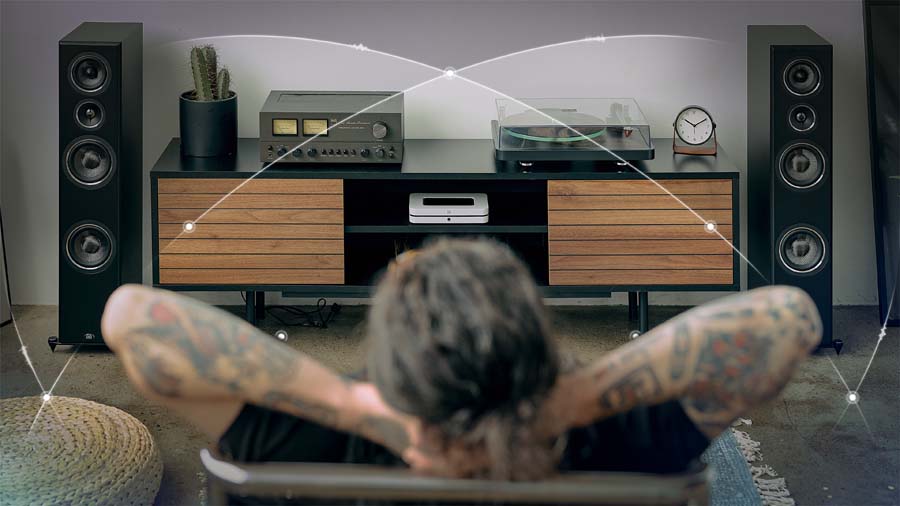
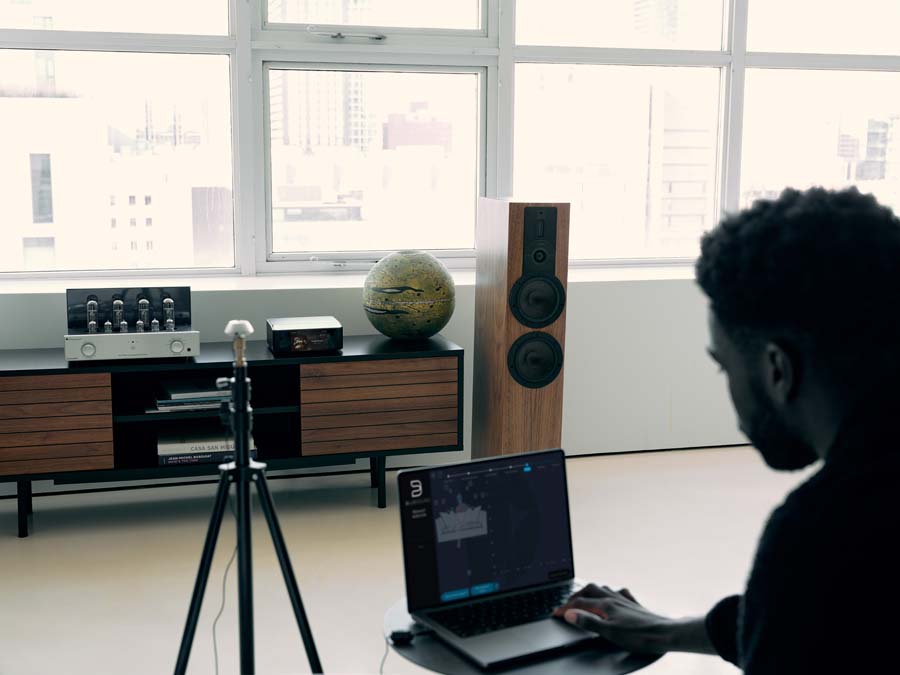
Whatever I played, the Node coped brilliantly, with no flaw to the sound. This new “2024” model also allows connection to DIRAC Live so that you can shape your room so that it sounds clean and tighter. According to the company, it can mean you don’t need sound isolation panels as the computer algorithm tries to make the music sound correct. DIRAC was named after the British physicist Paul Dirac whose mathematical algorithm links to the company, and using the supplied microphone and cable connected with an adaptor to the USB socket on the Node, I was able to repeatedly play pink noise with the microphone placed at different positions at and around the “sweet spot” to gain an overall impression of the sound in my room, and then the software corrects reflections, resonances and phase issues to get the sound perfect. You can adjust things a bit to get it as you want (I wanted a tighter top-end, for example) so I made 3 different settings to test with my music. Whilst I noticed using the DIRAC made the playback a bit quieter, the results were actually quite startling at times. Peter Gabriel’s ‘i/o’ album from 2023 was a brilliant choice to fully test these settings, which will appear in the “audio” menu on the BluOS controller now that DIRAC has communicated with the Node. There is extreme detail from guitars, bass and drums in this excellently recorded album, all carefully spaced around the soundstage with Gabriel’s distinctive voice filling the space between. Using DIRAC changed the position of his voice from in front of the speakers, to behind, creating a bigger stage, particularly in “Playing for Time”. Drums were quicker and clearer, though not quite as powerful and musical. Similarly, the detail from the acoustic guitars was tighter and further apart. This was very interesting based on the fact that I was using BBC-licensed Graham Audio LS5/9 speakers noted for their forward vocal sound as a result of the BBC crossover design. Whilst I liked what the DIRAC did, I was unsure whether to keep it in place, but you can always modify the settings you create on the software at any time. You can decide if you want to go that route if you purchase the Node. Certainly a good idea for bad listening rooms!
CONCLUSION
The Node is a very proficient and clever machine that gave a very good performance on all types of music, and importantly not adding or taking away anything from the music. Once I had corrected my faults in setting up BluOS, it was very able and so easy to use.
At £499 it is in war territory with other players, though, despite the company having been there at the start. If you can cope without having a screen to show pictures and words, then this is a particularly fine player, both operationally and sonically, and being now the fourth generation it must surely be a winner.
AT A GLANCE
Build Quality:
Very good looking and well-built
Sound Quality:
Very able for a digital-source player, keeping the music very musical, detailed and tight sounding, whatever the source
Value For Money:
There is a lot of competition around this price point now, but the £499 gave me a surprisingly good performance and a good BluOS controller, once I got past its quirks
We Loved:
Focus and imagery
Tight and extended bass
Ease of operation in use
We Didn’t Love So Much:
Lots of competition at this price
BluOS controller might not be easy to control on first use!
Would have liked a bit more sonic energy
Elevator Pitch Review: I keep streaming to a minimum, generally, as being an old analogue fogey I tend to end up screaming setting it all up. But, once I had mastered the Android or iOS side of things it was a doddle to use, and musically quite excellent. Whilst the BluOS controller is a bit like Marmite (you love it or hate it), once I got the hang of it, it was great to use and the music just played and played. It can even use DIRAC room correction, which is certainly useful, too.
Janine Elliot
System used:
Bluesound NODE streamer (using Qobuz, Deezer and FLAC/DSD sources from Samsung phone and A&K SE180 DAP); Music First Audio Baby Reference preamp, Synthesis Roma 98DC KT88 tube (amplification); Graham Audio LS5/9 plus Townshend Super-tweeter (speakers); Tellurium Ultra Silver 2, AARS, and Townshend F1 (cables); Coppice Audio stand and Townshend rack.
SUPPLIED SPECIFICATIONS
- DAC; ESS ES9039Q2M SABRE® DAC
- Streaming sources AirPlay 2, Spotify Connect, Tidal Connect, Qobuz, Roon Ready, Internet Radio, etc. Bluetooth 5.2. Two-way aptX Adaptive Bluetooth
- Network Wi-fi, ethernet
- Controls Five programmable quick-touch presets with proximity sensing
- Inputs Mini TOSLINK/3.5mm Stereo combo, HDMI eARC, USB-A (storage)
- Outputs RCA, coaxial, optical, subwoofer, USB-A
- Headphone output 6.3mm headphone output using THX AAA™ headphone amplifier technology
- Max file resolution 24-bit/192kHz PCM, DSD256
- Add-ons Room Correction with Dirac Live Ready via USB-A socket
- Dimensions (hwd) 4.6 x 22 x 14.6cm
- Weight 1.1kg
















































